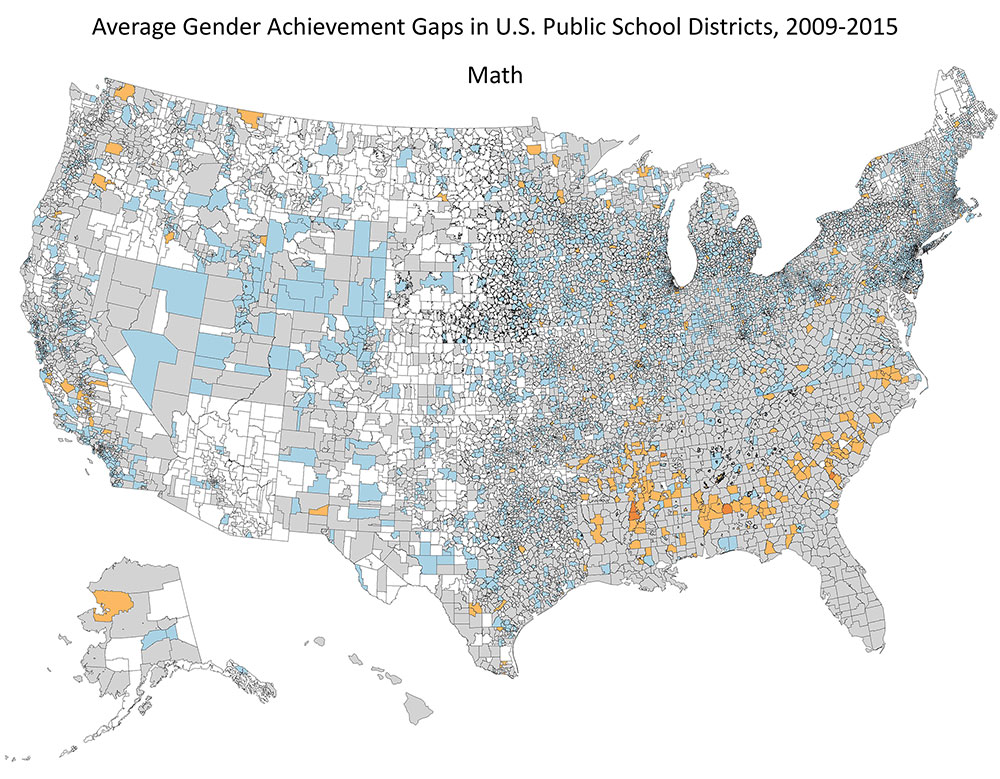In the first systematic study of gender achievement gaps in U.S. school districts, we estimate male-female test score gaps in math and English Language Arts (ELA) for nearly 10,000 school districts in the U.S. We use state accountability test data from third through eighth grade students in the 2008-09 through 2014-15 school years. The average school district in our sample has no gender achievement gap in math, but a gap of roughly 0.23 standard deviations in ELA that favors girls. Both math and ELA gender achievement gaps vary among school districts and are positively correlated – some districts have more male-favoring gaps and some more female-favoring gaps. We find that math gaps tend to favor males more in socioeconomically advantaged school districts and in districts with larger gender disparities in adult socioeconomic status. These two variables explain about one fifth of the variation in the math gaps. However, we find little or no association between the ELA gender gap and either socioeconomic variable, and we explain virtually none of the geographic variation in ELA gaps.
To download a data file with the gender achievement gap estimates produced in this paper, please click here to sign the data use agreement. Upon signing, you will be redirected to the Stanford Education Data Archive where you can download the data file from this paper.

 This map displays Empirical Bayes estimates of the average achievement gaps in math and English language arts in nearly 10,000 U.S. public school districts. A gap of zero indicates that there is no achievement gap in that district. Negative gaps (shown in orange) indicate that female students score higher on average than male students in the district; positive achievement gaps (shown in blue) indicate that male students score higher on average than female students in the district. The gaps displayed are in standard deviation units; for reference, a third of a standard deviation gap is approximately a one grade level difference.
This map displays Empirical Bayes estimates of the average achievement gaps in math and English language arts in nearly 10,000 U.S. public school districts. A gap of zero indicates that there is no achievement gap in that district. Negative gaps (shown in orange) indicate that female students score higher on average than male students in the district; positive achievement gaps (shown in blue) indicate that male students score higher on average than female students in the district. The gaps displayed are in standard deviation units; for reference, a third of a standard deviation gap is approximately a one grade level difference.

